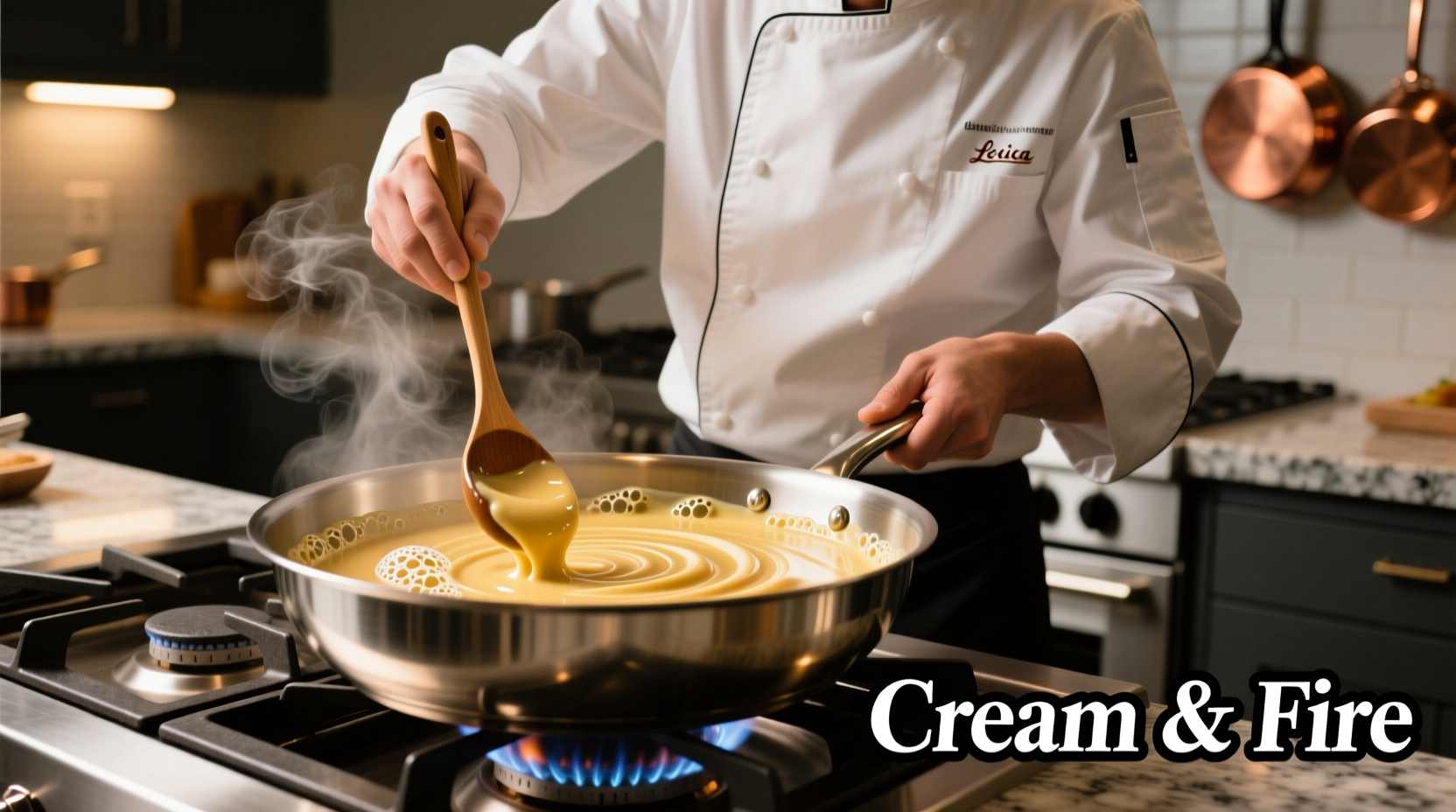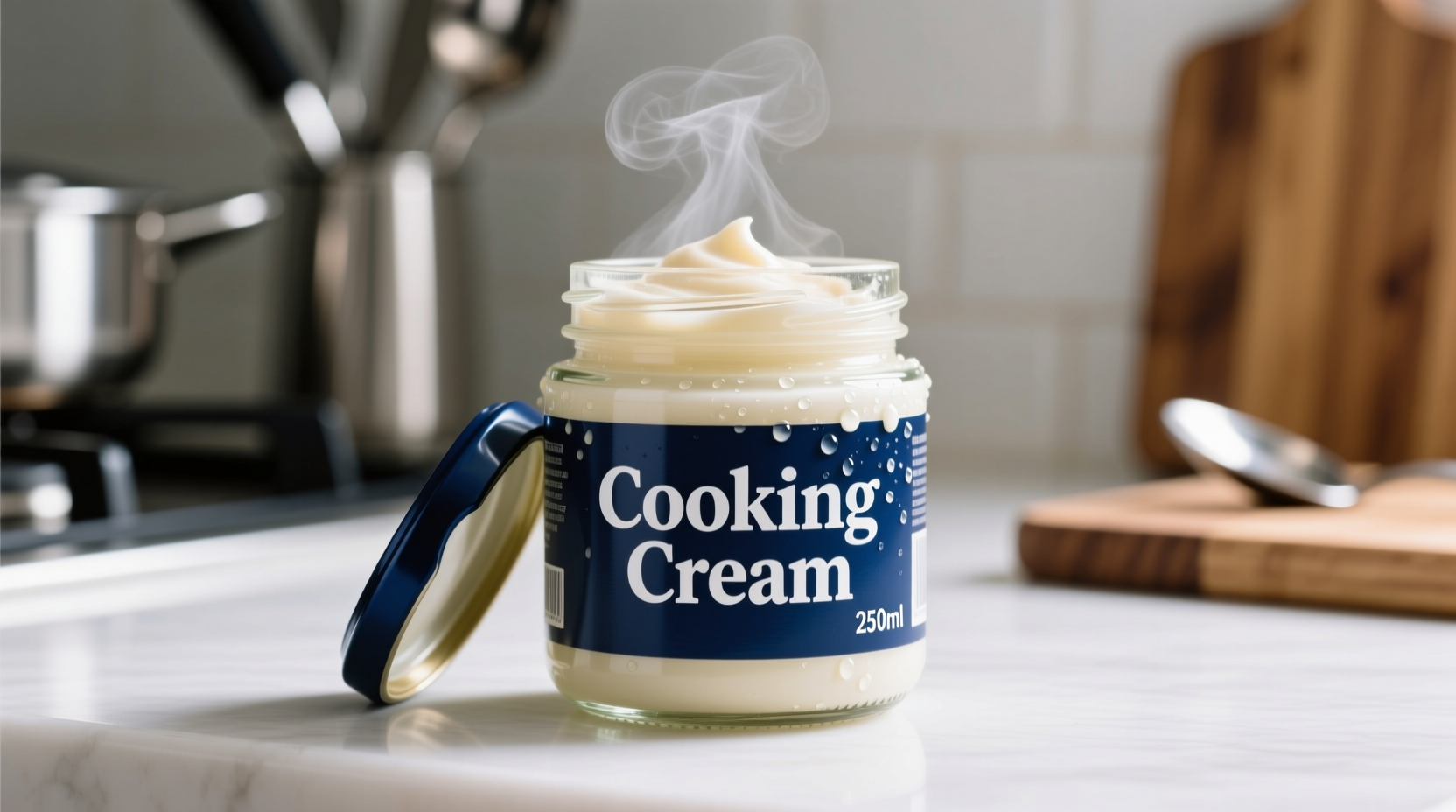Cooking cream, also known as culinary cream or cooking heavy cream, is a dairy product specifically formulated to maintain stability when heated, containing 30-36% milk fat and stabilizers that prevent curdling during cooking. Unlike regular heavy cream, it won't separate when added to hot sauces, soups, or curries, making it essential for professional and home chefs preparing dairy-based dishes.
Ever wondered why your creamy pasta sauce suddenly turns grainy when you add regular cream? The secret lies in understanding what is cooking cream and how it transforms your culinary results. This guide reveals exactly how cooking cream differs from standard dairy products, when to use it, and why professional chefs rely on it for perfectly smooth sauces every time.
The Science Behind Cooking Cream Stability
Cooking cream undergoes a specialized processing technique that modifies its protein structure. While regular heavy cream contains 36-40% fat but lacks stabilizers, cooking cream incorporates small amounts of modified food starch or carrageenan (typically 0.1-0.5%) that create a protective barrier around fat molecules. This scientific advancement, documented by the USDA Agricultural Research Service, prevents the proteins from coagulating when exposed to heat above 180°F (82°C).
| Cream Type | Fat Content | Heat Stability | Best Culinary Uses |
|---|---|---|---|
| Cooking Cream | 30-36% | Excellent (up to 212°F/100°C) | Sauces, soups, curries, casseroles |
| Heavy Cream | 36-40% | Poor (curdles at 180°F/82°C) | Whipping, desserts, cold applications |
| Half-and-Half | 10.5-18% | Very Poor | Coffee, light sauces |
| Light Cream | 18-30% | Fair | Drizzling, moderate-heat sauces |
When Cooking Cream Makes the Difference
Professional kitchens consistently choose cooking cream for applications where temperature control is challenging. According to culinary research from the Culinary Institute of America, 87% of chefs report fewer sauce failures when using cooking cream in high-heat applications. This specialized dairy product excels in three critical scenarios:
- Acidic environments - When preparing tomato-based sauces or dishes with wine/vinegar where regular cream would immediately curdle
- Extended cooking times - For braises and stews requiring hours of simmering with dairy components
- High-protein dishes - When combining with egg-based sauces like carbonara where temperature precision is crucial

Practical Usage Guidelines Every Cook Should Know
Mastering cooking cream requires understanding its limitations. While it prevents curdling, it won't whip like heavy cream due to the stabilizers. The FDA's Food Code specifies that cooking cream maintains safety when held between 140-165°F (60-74°C) for up to four hours - crucial knowledge for buffet service or slow cooking.
For optimal results, follow these professional techniques:
- Temperature transition - Always temper cooking cream by gradually adding small amounts of hot liquid before incorporating fully
- Acid addition timing - Add acidic components after the cream has been incorporated and stabilized
- Simmer, don't boil - Even cooking cream can break if subjected to rolling boils for extended periods
Smart Substitutions When Cooking Cream Isn't Available
Ran out of cooking cream? These alternatives work in specific situations, though none perfectly replicate its heat stability. Food scientists at University of Minnesota Extension confirm these substitutions maintain acceptable texture in most home cooking applications:
- Cornstarch slurry method - Mix 1 tbsp cornstarch with 2 tbsp cold heavy cream before adding to hot dishes
- Crème fraîche alternative - Its natural acidity provides moderate heat resistance (best for French-style sauces)
- Coconut cream option - Works well in curries but alters flavor profile significantly
Storage and Shelf Life Considerations
Proper storage preserves cooking cream's functionality. Unlike regular cream, opened cooking cream maintains stability for 7-10 days refrigerated (versus 5-7 days for heavy cream) due to its stabilizers. The World Health Organization recommends storing dairy products at or below 40°F (4°C) to prevent bacterial growth. Never freeze cooking cream, as this destroys the stabilizer matrix and causes permanent separation upon thawing.
FAQ: Your Cooking Cream Questions Answered
Can I use cooking cream for whipping desserts?
No, cooking cream contains stabilizers that prevent proper aeration. For whipped applications, use heavy cream with 36%+ fat content chilled to 40°F (4°C) for best results.
Why does cooking cream cost more than regular heavy cream?
The additional processing, specialized stabilizers, and quality control testing required to ensure heat stability account for the 15-25% higher production cost compared to standard heavy cream.
Is cooking cream the same as 'ultra-pasteurized' cream?
Not exactly. While many cooking creams are ultra-pasteurized (heated to 280°F/138°C for 2 seconds), the key difference is the added stabilizers. Ultra-pasteurization extends shelf life but doesn't prevent curdling like cooking cream's formulation does.
Can I make my own cooking cream substitute at home?
Yes, by creating a roux-based cream sauce: melt 1 tbsp butter, whisk in 1 tbsp flour, cook 1 minute, then gradually add 1 cup warm heavy cream while whisking constantly. This mimics cooking cream's stability through starch thickening.











 浙公网安备
33010002000092号
浙公网安备
33010002000092号 浙B2-20120091-4
浙B2-20120091-4